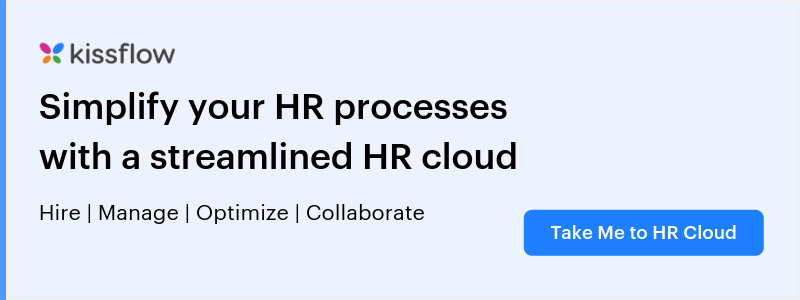With so many organizations dealing with an ever-growing list of HR processes to manage their workforce, the need to implement human capital management software has never been greater.
In order to stay competitive, it’s vital that employees have the time to focus on value-adding work rather than repetitive or time-consuming administration. Human Capital Management Software (HCM Software) can help your overworked HR team and line managers to free up time from such tasks.
Key features that you can expect from HCM software:
1. Workforce Planning
Human Capital Management software offers a great way to manage and plan your organization’s workforce so that it meets the needs of the business as a whole. For example, the system allows senior managers to model workforce needs based on changes to business strategy.
2. Performance Management and Competency Management
Evaluating employee performance, giving feedback, scoring and setting future objectives can be time-consuming tasks for both line managers and their teams, but HCM software adds automation to the process, allowing them to complete and store feedback, ratings and performance evaluations in the performance management software module of HCM.
3. Compensation Planning and Strategy
One of the great benefits of using HCM software to track the salary and benefits information for employees is that the data can be easily manipulated and analyzed. This means that you can see your compensation spend, sliced in multiple ways, and use this data to formulate future compensation strategy.
4. Time and expense management
HCM software lets your employees submit timesheets and expense claims quickly and easily, without the need for manual forms and authorization requests.
5. Learning and Development
The best HCM software supports the learning and development strategy of an organization by holding information on the range of courses or training/learning opportunities on offer and either allowing employees to self-select their training or allowing managers to match their team members with suitable learning interventions based on their performance development plan.
This is one of the most used elements of Human Capital Management software, and potentially one of the most value-adding areas to an organization. Recruiting new staff can be made easier through automatically-generated job descriptions, and seamlessly advertising and shortlisting candidates for interviews.
7. Onboarding
With the employee onboarding module, users can quickly and efficiently carry out all of the processes relating to new joiners to the organization, such as generating contracts and letters from templates, requesting reference information and creating new employee records.
8. Contingent Workforce Management
Many HCM systems include a contingent workforce management option, allowing managers to record details of their non-core employees, such as freelancers or consultants. It’s crucial to capture cost and usage data about these individuals as, though not employees, they are an essential part of an organization’s wider workforce.
9. Organization Visualization
HCM software offers new ways for you to shape and track the visualization and strategy of your company. This could include modeling different scenarios such as reducing or increasing headcount or investing in more training to upskill staff to launch a new product
10. Reporting and Analytics (Workforce Analytics)
One of the most significant benefits that HCM can offer organizations is its ability to report on and analyze some of the critical business metrics relating to the people side of the business. At the touch of a button, users can run pre-designed, customized reports to gauge metrics like employee turnover, recruitment spends and employee performance by the department.
11. Workflow
Workflows are the step-by-step processes relating to different tasks in a business. HCM software enables you to set up personalized HR workflows for different HR processes. This way, many of the functions can either be completed automatically, as part of a sequence or with minimal user interaction.
Difference Between HCM Software and HRM Software?
Although many people use the terms HCM and HRMS interchangeably, there is a subtle difference between the two. Human Resource Management Software focuses on the fundamental processes tasks relating to the people or human resource activity of your organization. HCM software also deals with this, but often takes the concept to the next level by supporting your business with its strategic goals through workforce management, such as organizational development, change management, employee engagement, and leadership development.
Finding the Right HCM Software for Your Organization
The features and functions of human capital management software inevitably vary by provider, as do the quality or focus on particular components. That’s why it is well worth carefully evaluating the options on the market so that you choose the right HR software for your business, ensuring that it is the right fit both for now and for your future business needs.








.webp)


![Human Resource Management in 2020 [With 5 Best Tools]](https://kissflow.com/hs-fs/hubfs/Human-resource-management.webp?width=352&name=Human-resource-management.webp)
